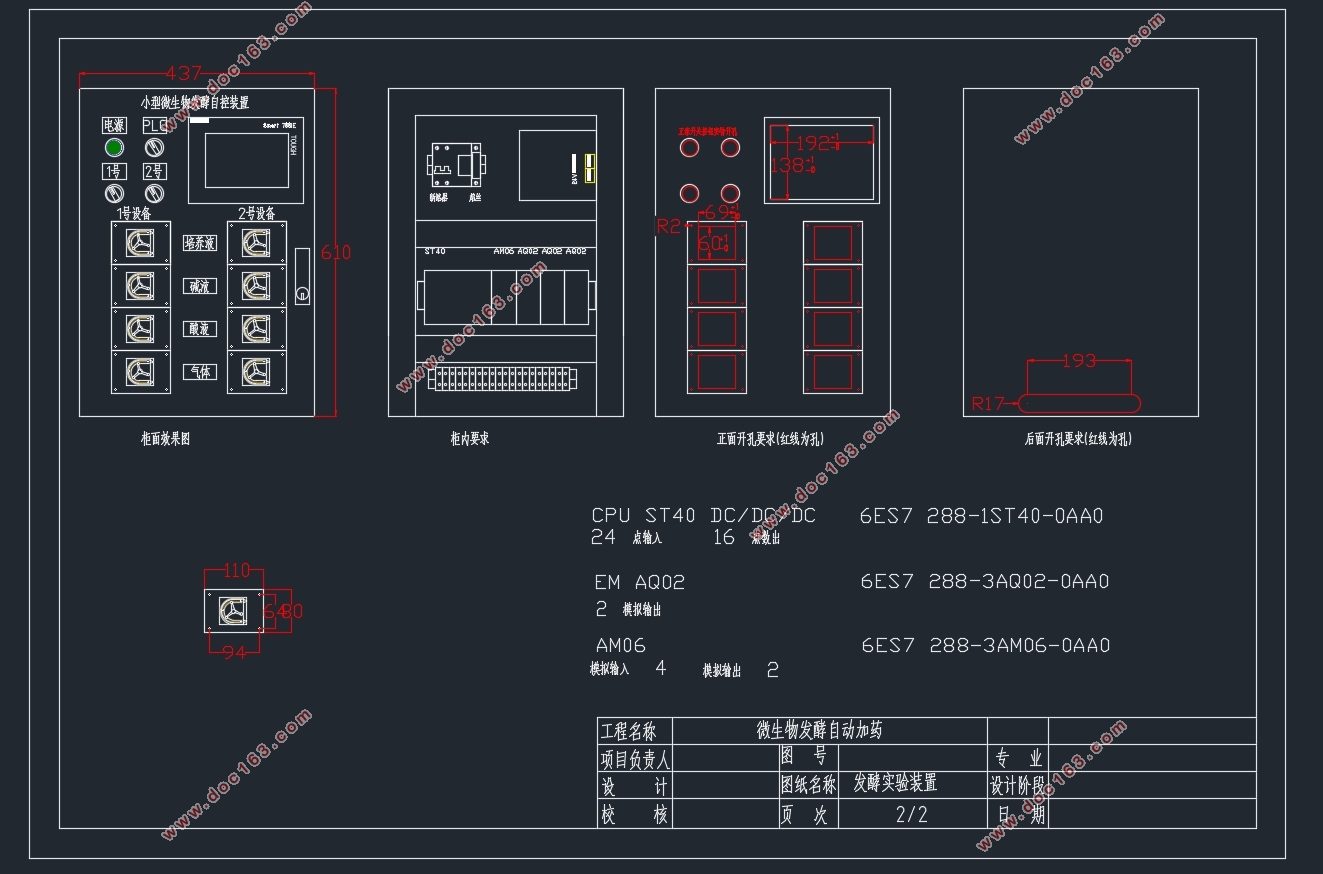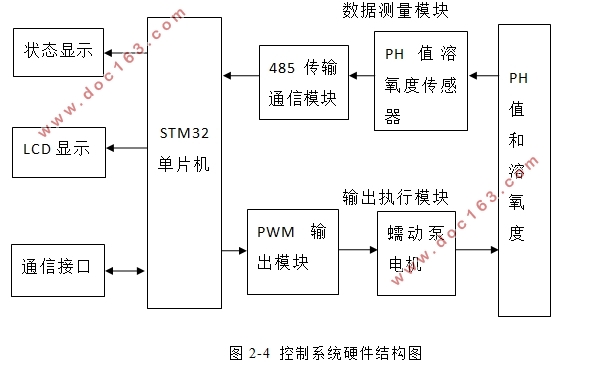基于STM32的数据采集与控制系统的设计

基于STM32的数据采集与控制系统的设计(开题报告,外文翻译,论文16000字,实验程序,CAD图纸1张)
摘 要
在生物技术中,现代发酵技术有着举足轻重的作用,因为绝大多数生物技术的目标都是通过发酵工程来实现的。发酵指人们借助微生物在各种条件下之间的生物化学反应来制备微生物菌体本身、或者直接代谢产物或次级代谢产物的过程。所以,如何提升微生物发酵工程综合自动化程度,控制好微生物发酵的过程,提高产品质量是目前讨论的热门话题。本文正是建立在微生物发酵的平台上,提出以STM32单片机为控制核心,实现对PH值和溶氧度的数据采集与自动控制的目的。本文主要研究内容如下:
(1)首先,要设计这样一个微生物发酵控制系统,先要熟悉微生物发酵工艺的控制要求和动态特性。系统的工艺控制要求主要从两个被控对象入手,一是PH值的自动控制,二是溶氧度控制。然后全面的设计出整个控制系统的设计方案。
(2)要对整个系统进行硬件的总体设计,主要是结合工艺用STM32单片机作为控制核心设计出整个控制回路,并将所需的外围硬件接入整个控制系统。要将整个硬件控制系统的分模块的进行单独的设计并实现其所要实现的功能,其中包括通讯模块(用传感器和单片机进行通讯实现数据采集的功能),执行模块(用PWM模块信号输出去控制蠕动泵的转速去控制PH值和溶氧度)以及液晶模块(实现人机交互的功能)。
(3)接下来要对整个系统进行相应的软件设计去实现各模块的功能控制,主要使用uVision5嵌入式开发环境进行软件的编译与调试。其中最主要的还是通过PID控制算法去统筹整个系统,其中包括连续PID控制的离散化以及PID参数的整定。最后测试系统,解决系统运行中所遇到的问题,保证系统能够稳定的运行,实现对PH值和溶氧度的数据采集和控制的目的。
关键词:单片机,数据采集,PID控制
Abstract
In biotechnology, modern fermentation technology plays an important role, because the target of the majority of biotechnology through fermentation engineering to achieve. It refers to the process by means of microbial fermentation biochemical reactions between the various conditions to prepare microbial cells themselves, either directly metabolites or secondary metabolites. So, how to enhance the level of integrated automation microbial fermentation engineering, control microbial fermentation processes, improve product quality is currently a hot topic of discussion. This article is based on microbial fermentation platform, offered to STM32 microcontroller core, to achieve the degree of PH value and dissolved oxygen data acquisition and automatic control purposes. The main contents are as follows: [资料来源:http://doc163.com]
(1) First, to design such a microbial fermentation control system, you have to be familiar with the requirements of the control of microbial fermentation processes and dynamics. Process control requirements of the system starting from two charged objects, one automatic control of PH value, the second is the degree of control of dissolved oxygen. Then complete the design of the control system design.
(2) to the entire system hardware overall design it is mainly a combination process with STM32 microcontroller as the control design of the entire control circuit and peripheral hardware needed access the entire control system. To the whole control system hardware sub-modules were individually designed and implemented to achieve its functions, including communication modules (sensors and microcontrollers to communicate with data acquisition functions), execution module (module with PWM output signal to control peristaltic pump speed to control the PH value and the degree of dissolved oxygen) and liquid crystal modules (functions to achieve human-computer interaction). [来源:http://Doc163.com]
(3) Next, the entire system should be designed to achieve the appropriate software function control each module, primarily used uVision5 embedded software development environment compile and debug. The most important thing is to go through the PID control algorithm integrated the entire system, including discrete and continuous tuning PID PID control. Finally, the test system, to solve problems encountered in the system is running, the system can ensure stable operation, to achieve the purpose of dissolved oxygen and PH value of the data acquisition and control.
Keywords: MCU; DATA collection;PID control;


目 录
摘 要 I
Abstract II
第一章 绪论 1
1.1 引言 1
1.2 微生物发酵过程 1
1.3 嵌入式系统在微生物发酵中的应用 3
1.4 课题综述 4
1.4.1课题的背景及意义 4
1.4.2 系统设计的目的 5
1.4.3 论文的组织结构 5
第二章 系统的总体设计 6
2.1 系统工艺的设计 6
[资料来源:www.doc163.com]
2.1.1 PH值的工艺设计 6
2.1.2 溶氧度的工艺设计 6
2.1.3 工艺流程的设计与实现 7
2.2 系统硬件总体设计 8
第三章 系统的硬件设计 11
3.1 STM32单片机介绍 11
3.2 通讯模块设计 13
3.3 执行模块设计 15
3.4 液晶显示模块设计 18
第四章 系统的软件设计 20
4.1软件开发环境及其工具 20
4.2 软件系统总体设计 21
4.2.1 软件程序结构 21
4.2.2 主程序设计 21
4.2.3 初始化程序设计 23
4.2.4 数据采集程序设计 23
4.2.5 液晶显示程序设计 24
4.2.6 PID控制算法程序设计 25
4.2.7 PWM 输出程序设计 29
第五章 系统的运行结果及问题分析 30
5.1 运行结果及分析 30
5.2 出现的问题及解决方法 31
第六章 总结与展望 33
参考文献 34
致 谢 36
